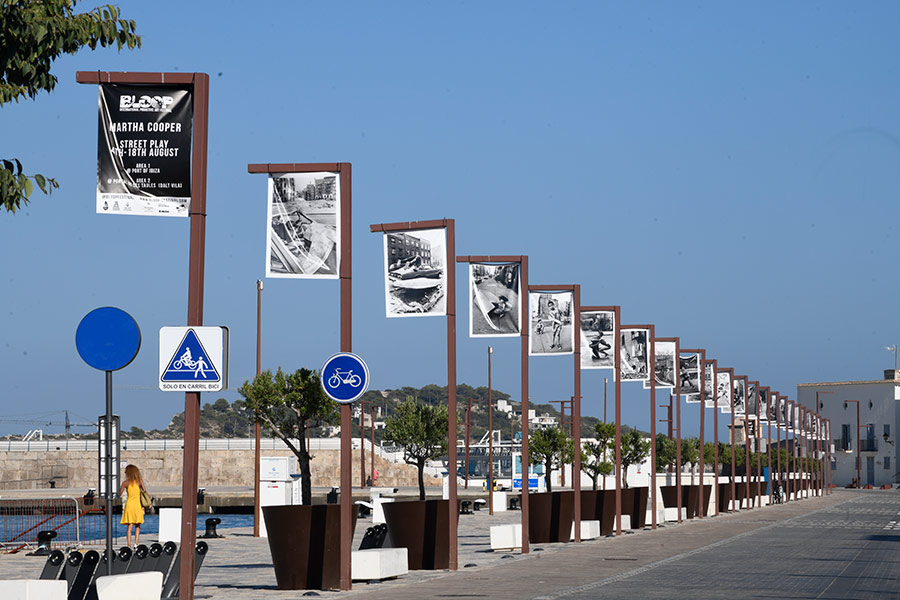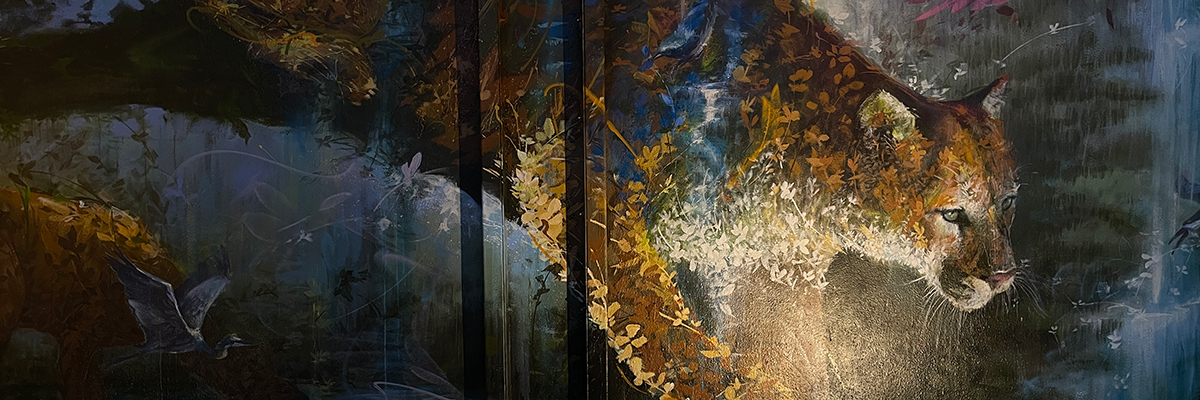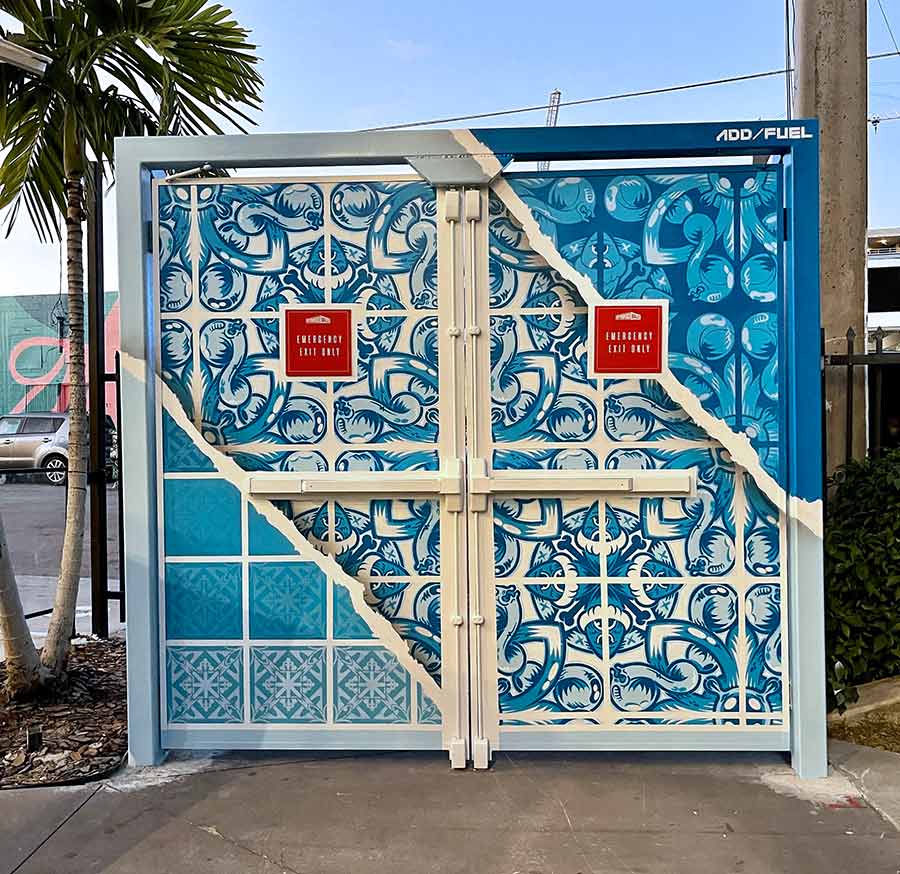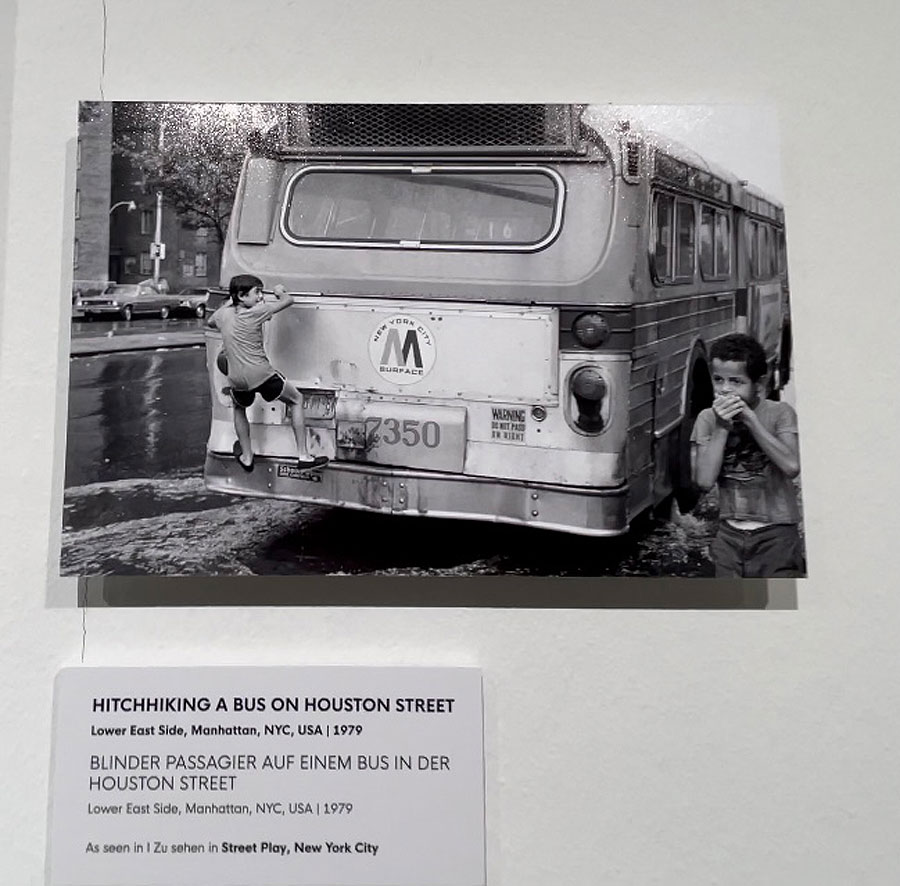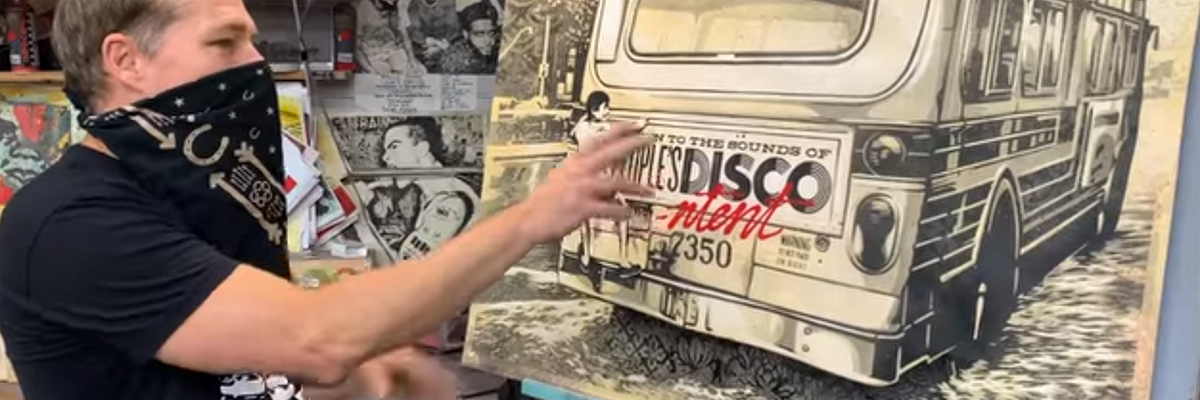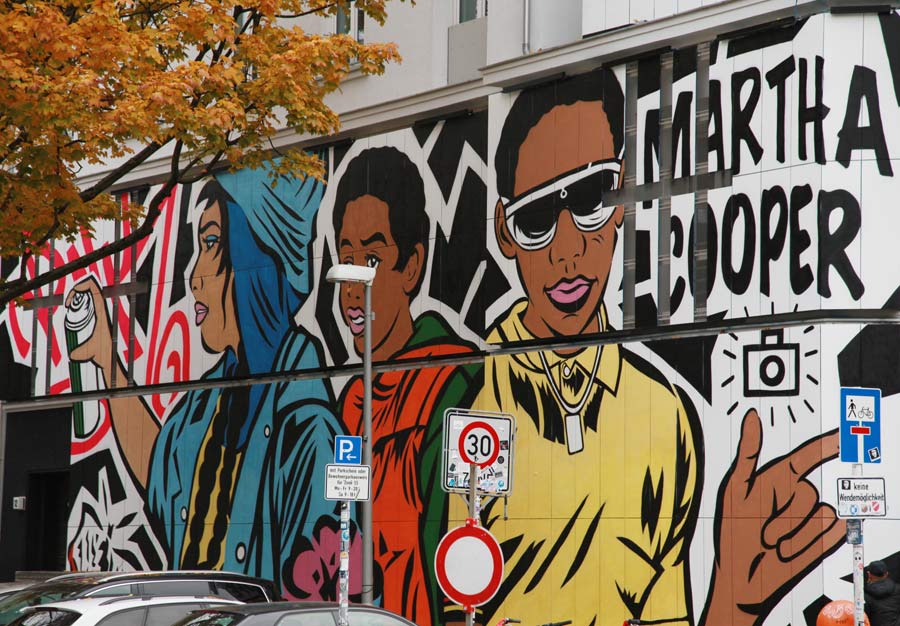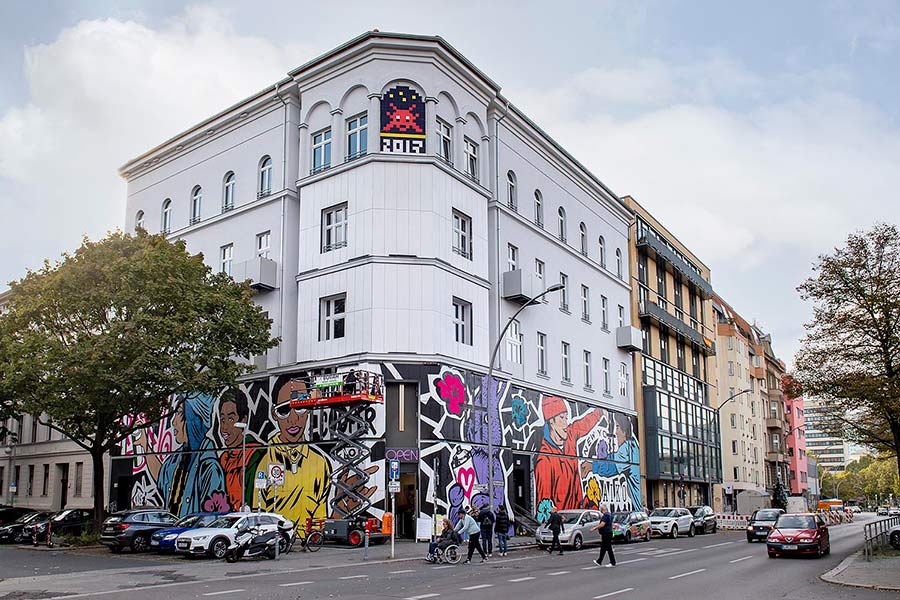It’s that time of the year again! BSA has been publishing our “Hot Lists” and best-of collections for more than 11 years every December.
Our interests and understanding and network of connections continued to spread far afield this year, and you probably can tell it just by the books we featured: stickers, illustration, murals, copyright law, a cross-country spraycation, anamorphic street installation, Hip-Hop photography, graffiti writers community, and a lockdown project that kept an artists sanity.
So here is a short list from 2021 that you may enjoy as well – just in case you would like to give them as gifts to family, friends, or even to yourself.

Leon Keer: “Break Glass In Case Of Lost Childhood”

From BSA:
One of the challenges in creating a book about anamorphic art is presenting images that tell the viewer that they are being tricked by perspective yet hold onto the magic that this unique art conjures in people who walk by it on the street.
In a way, that brass skeleton key that allows entry into another world is precisely what Dutch pop-surrealist artist Leon Keer has been seeking for decades to evoke in viewers’ heads and hearts. Some would argue he is preeminently such; certainly, he is the wizard whose work on walls and streets has triggered memories for thousands of children and ex-children of the fantastic worlds they have visited.
“You develop your senses all your life. Through what you experience, you involve affinities and aversions,” he says in his first comprehensive bound collection of gorgeous plates entitled In Case of Lost Childhood Break Glass. “Your memories shape the way you look at the world. When it comes to reflecting my thoughts, my memories are key. I needed to feel some kind of affection or remorse towards the object or situation I want to paint.”
Leon Keer. “Break Glass In Case Of Lost Childhood”. Published by Lannoo Publishers, Belgium, 2020

Street Art Today 2 by Bjorn Van Poucke: An Update on 50 “Most Relevant” Artists

From BSA:
A worthy companion to the original tome, Bjørn Van Poucke and Lanoo publishers extend the hitlist of favored muralists that he & Elise Luong began in Street art/ Today 1 – and the collection is updated perhaps with the perceived cultural capital many of these artists have garnered since then.
Replete with full-color plates from the artists’ own collections and garnished with brief overviews of their histories, creative background, and philosophies, the well-designed and modern layout functions as an introduction for those unfamiliar with the wide variety of artworks that are currently spread across city walls as large scale opus artworks in public space. As organizer and curator of The Crystal Ship mural festival in Oostende, Belgium, Mr. Van Poucke has had his pick of the litter and has showcased them during the late twenty-teens.

WAONE Opens Monochrome “Worlds Of Phantasmagoria”

From BSA:
A new illustrated tome capturing the black and white work of one-half of Ukraine’s mural painting duo Interesni Kazki welcomes you into the past wonders and future imaginings of a world framed in “Phantasmagoria.”
Full of monochromatic fantasies at least partially inspired by the worlds unleashed by Belgian inventor and physicist Étienne-Gaspard “Robertson” Robert, Waone’s own interior expanding fantascope of miss-appended demons, dragon slayers, riddle-speaking botanicals, and mythological heroes may borrow as deeply from his father’s Soviet natural science magazines that brimmed with hand-painted illustrations – which served as his education and entertainment as a child.
This book, the first of two volumes of graphic works, explores Waone’s move from the street into the studio, from full color into black and white, from aerosol and brush to etching, lithography, augmented reality, and sculpting.

“Closed (In) for Inventory”: FKDL Makes the Most of His Confinement, 10 Items at a Time

From BSA:
The world is slowly making movements toward the door as if to go outside and begin living again in a manner to which we had been accustomed before COVID made many of us become shut-ins. Parisian street artist FKDL was no exception, afraid for his health. However, he does have a very attractively feathered nest, so he made the best of his time creating.
“March 17, 2020, the unprecedented experience of confinement begins in France,” writes Camille Berthelot in the introduction to Closed (in) for Inventory, “Time that usually goes so fast turns into a space of freedom, and everyone has the leisure or the obligation to devote himself to the unexpected.”
FKDL quickly began a project daily, sorting and assembling 10 items and photographing them. He posted them to his Instagram by mid-day. Eventually, he saved the photographed compositions together and created this book.
“My duty of tidying up and sorting out turned into a daily challenge. I dove like a child into the big toybox my apartment is to select and share my strange objects, my banalities, my memories, my creations, and those of others,” he writes. “I gather these treasures, valuables or not, in search of harmony of subject, forms, materials, and nuances.”
(EN)FERME POUR INVENTAIRE by Les Editions Franck Duval. Paris, France.

“Unsmashed” A Street Art Sticker “Field Guide”

From BSA:
The street sticker, be it ever so humble and diminutive, is profligate and sometimes even inspiring. An amalgamated scene that is anonymous, yet curiously stuck together, the organizers and sponsors of so-called sticker jams have been overwhelmed in recent years by thousands of participants.
Artist and organizer IWILLNOT has compiled, organized, archived, and preserved this collection as a ‘field guide,’ he says, and another artist named Cheer Up has laid out page after page. It is a global cross-sample from 60 countries and a thousand artists – a treasure trove of the witty, insightful, snotty, and sometimes antisocial street bards of the moment, seizing their moment to speak and mark territory.

MOMO Leaves His “Parting Line”

From BSA:
A year after its close, we open the book on American street artist MOMO’s new book chronicling the exhibition “Parting Line.” Writing about and covering his work for 15 years or so, we’re always pleased to see where his path has led – never surprised but always pleased with his evolution of decoding the lines, textures, practices, serendipity of discoveries unearthed by this wandering interrogator.
Here, along the river Seine banks, we see his exhibition for the still young Hangar 107, the recently inaugurated Center For Contemporary Art in Rouen, France. While we think of his work in New York in the 2000s, we see the steady progression here – his cloud washes, raking patterns, his experimental, experiential zeal. This is the spirit of DIY that we first fell in love with, the lust for uncovering and the desire for making marks unlike others across the cityscape, quizzically folding and unfolding, pulling the string, drawing the line.

“Born In The Bronx” Expanded: Joe Conzo’s Intuitive Eye on Early Hip Hop

From BSA:
Born in the Bronx: A Visual Record of the Early Days of Hip Hop
Yes, Yes, Y’all, it’s been a decade since this volume, “Born in the Bronx,” was released. The images here by photographer Joe Conzo seem even more deeply soaked in the amber light of early Hip Hop culture from the late 1970s and early 80s, now taking on a deepened sense of the historical.
As the city and the original players of this story have evolved through the decades that followed the nascent Hip Hop era, it’s clearer than ever that this was nothing less than a full-force eruption, a revelation that cracked and shook and rocket-fueled an entire culture. Thanks to Conzo it was captured and preserved, not likely to be repeated.
Born in the Bronx is full of gems, insider observations, interviews, and personal hand-drawn artworks. One critical cornerstone is a timeline from Jeff Chang that begins in 1963 as the boastful but failed Urban Planner Robert Moses constructed the Cross Bronx Expressway – painfully destroying and displacing people and families, severing culturally significant, vibrant areas of the borough and producing a dangerous malaise.

Enrico Bonadio: Protecting Art in the Street

From BSA:
Enrico Bonadio is a contributor to BSA Writer’s Bench OpEd column, he is a Reader in Intellectual Property Law at City, University of London, and a street and graffiti art aficionado. His current research agenda focuses on the legal protection of non-conventional forms of creativity. He recently edited the Cambridge Handbook of Copyright in Street Art and Graffiti (Cambridge University Press 2019) and Non-Conventional Copyright – Do New and Atypical Works Deserve Protection? (Elgar 2018). He is currently working on his monograph Penetration of Copyright into Street Art and Graffiti Sub-Cultures (Brill, expected 2022).
Enrico is a Member of the Editorial Board of the NUART Journal, which publishes provocative and critical writings on a range of topics relating to street art practice and urban art cultures.
His academic research has been covered by CNN, Wall Street Journal, Bloomberg, BBC, Washington Post, The New York Times, Financial Times. Reuters, The Guardian, The Times, Independent, and The Conversation, amongst other media outlets.
Enrico’s current title is Protecting Art in the Street: A Guide to Copyright in Street Art and Graffiti (Dokument Press), with a foreword by Zephyr

A “Gentle People” Aussie Tour: Paint, Fun, and Run with 1UP & Olf

From BSA:
It’s almost sublimely subversive to publish your illegal graffiti escapades in a handsomely bound photo book with creamy paper stock and gauzy, professional photos. Positioned as a travelogue across the great Australian continent (complete with a hand-drawn map), the international troupe of sprayers named 1UP from Germany provides a genteel accounting of their expansive itinerary in a diary here for you, dear reader.
The stories are not without surprise and carefully touch on all the necessary road trip tropes you may wish for but cannot be assured of in a cross-country graffiti tale of skylarking and aesthetic destruction: angry rural police, security cameras, sleeping in rolled-up carpets, fancy receptions with Aperol Spritz, climbing over fences, sudden fire extinguisher tags, exploding paint cans, smoky wildfires, beaches, wallabies, long never-ending-stretches of road, the Sydney Harbor, an emergency-brake whole-car in Melbourne, and yes, a large kangaroo smashing into your car on a darkened country path.
PAINT, FUN, RUN, 1UP & OLF: GENTLE PEOPLE TOUR. 1UP CREW BERLIN. PRINTED AND BOUND IN GERMANY

“Nation Of Graffiti Artists” Opens Another Chapter of NYC Writer History

From BSA:
SCORPIO, BLOOD TEA, ALI, STAN 153, SAL 161, CLIFF 159. It was the mid to late 70s in New York and train writing was in its foundational stages, later to be referred to as legendary. For a modest crew of teenagers, it was the hypest stage you could be on, and going all city constructed many dreams of fame and recognition on the street.
Jack Pelsinger wanted to help shepherd these talents and energies into something they could develop into a future, maybe a profession. With a lease on a storefront from the city for a dollar in 1974, he made way for the Nation of Graffiti Artists (NOGA). An artists workshop and haven for a creative community that was regularly sidelined or overlooked, the author of this new volume, Chris Pape (acclaimed OG Freedom), says “Like moths drawn to a light, the kids showed up, hundreds of them.”
With extraordinary photos shot by Michael Lawrence, the book serves as a true document for the New York of that moment and opens doors to a chapter of graffiti history you may not even have known of until now.
 BROOKLYN STREET ART LOVES YOU MORE EVERY DAY
BROOKLYN STREET ART LOVES YOU MORE EVERY DAY







